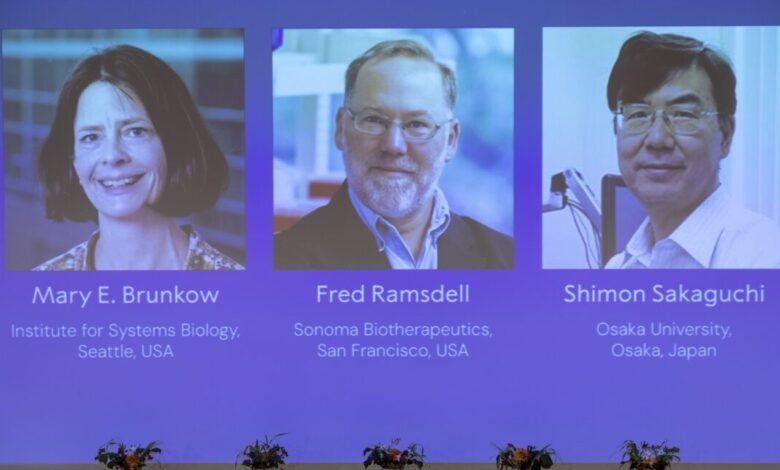Nobel Prize Honors Discovery of Cells That Control Immune Response

▼ Summary
– Mary Brunkow, Fred Ramsdell, and Shimon Sakaguchi won the 2025 Nobel Prize in Physiology or Medicine for discovering regulatory T cells that control harmful immune responses.
– Regulatory T cells maintain peripheral immune tolerance by balancing appropriate immune reactions against germs without overreacting.
– Previously, immune tolerance was thought to occur only centrally in the thymus, where T cells mature and are tested to prevent autoimmune attacks.
– In the thymus, T cells that react to the body’s own components are eliminated to avoid autoimmune diseases before being released.
– Researchers later suspected peripheral mechanisms existed to suppress rogue T cells, leading to the abandoned 1970s concept of “suppressor T cells” due to inconsistencies.
The 2025 Nobel Prize in Physiology or Medicine has been awarded to Mary Brunkow, Fred Ramsdell, and Shimon Sakaguchi for their groundbreaking identification of specialized immune cells that regulate the body’s defense mechanisms. These cells, known as regulatory T cells, patrol the body and prevent the immune system from causing harm, either by mistakenly attacking healthy tissues, which leads to autoimmune diseases, or by overreacting to external threats.
Regulatory T cells are now recognized as essential for maintaining peripheral immune tolerance, a process that ensures the immune response remains balanced. This balance allows the body to aggressively fight off germs and other dangers without damaging its own cells. Before the laureates’ discoveries, scientists believed that such immune control happened only in the thymus, a central organ in the chest where T cells mature.
In the thymus, T cells undergo a critical screening process. They are exposed to fragments of the body’s own proteins, and any T cell that reacts strongly to these self-antigens is eliminated. This central tolerance mechanism prevents most self-attacking cells from entering circulation. Mature T cells then differentiate into helper T cells, which activate immune responses against invaders, and cytotoxic T cells, which destroy infected or cancerous cells.
Despite this central control, researchers suspected additional safeguards existed in the body’s periphery. They theorized that some T cells might escape thymic screening yet retain the potential to cause autoimmune damage. During the 1970s, the concept of “suppressor T cells” emerged, suggesting a population of cells that could dampen immune activity. However, inconsistent experimental results and a lack of clear markers caused many scientists to dismiss the idea, leaving a significant gap in understanding immune regulation.
(Source: Ars Technica)